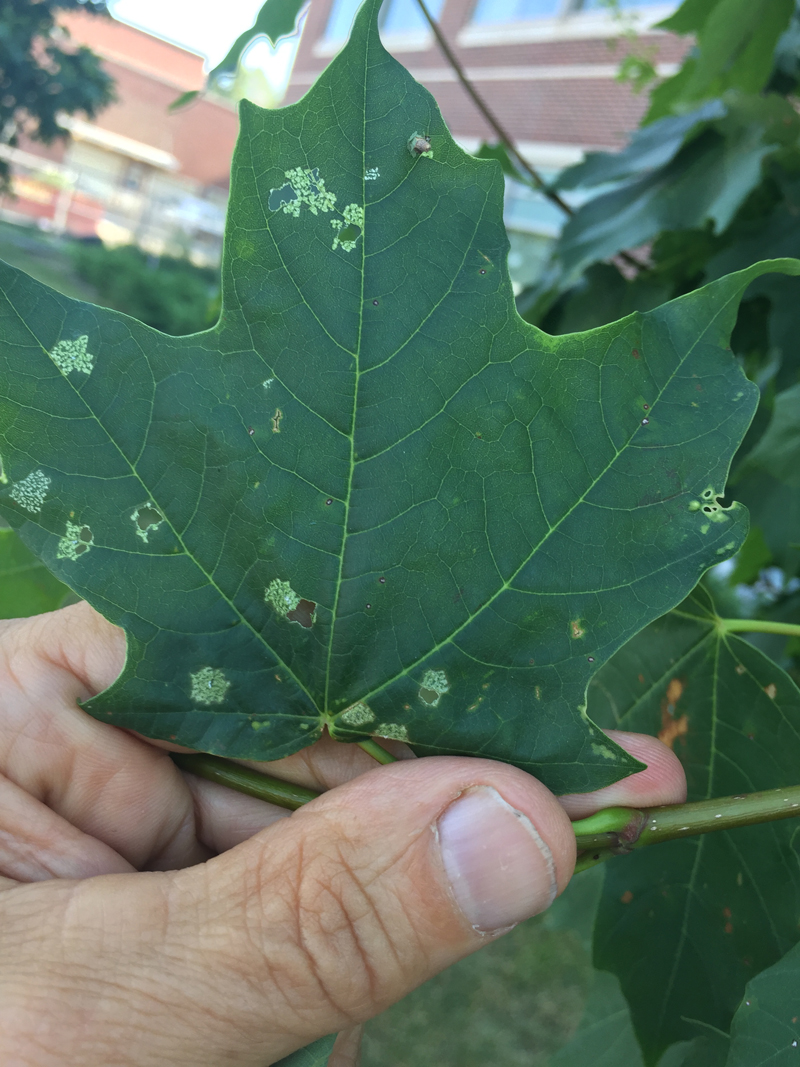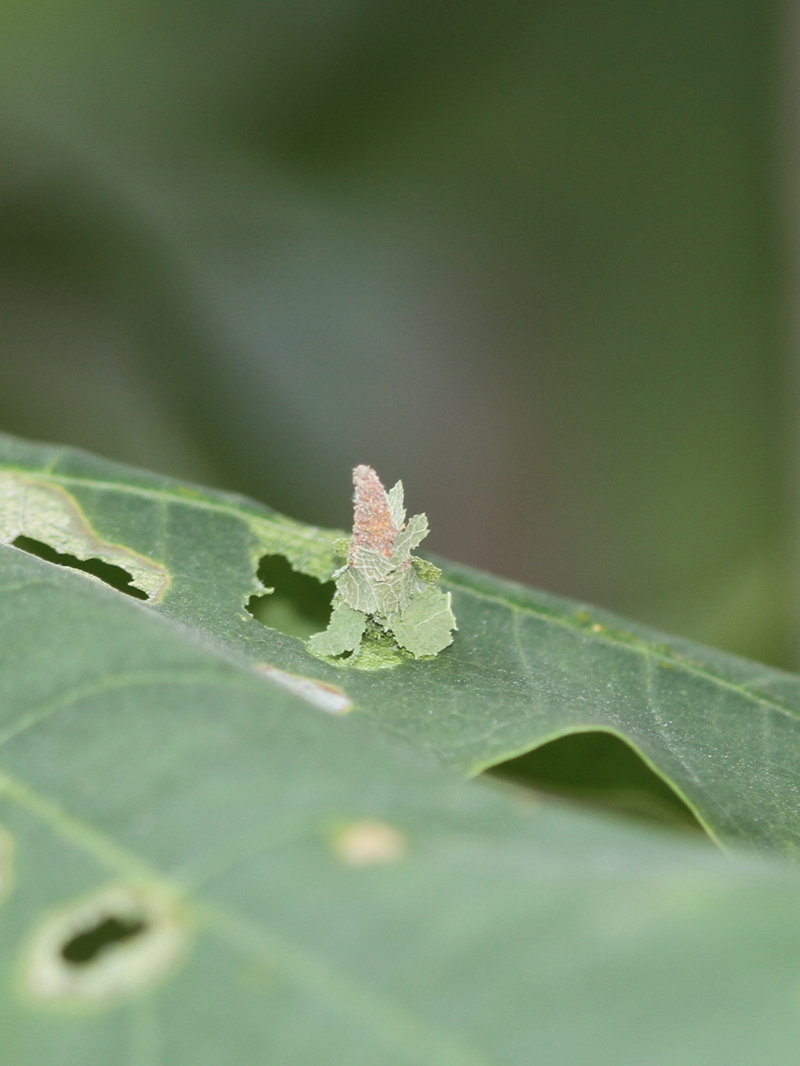What's Hot at the PPDL
June 16, 2017
Evergreen Bagworm? Not Forever True.
Cliff Sadof, Department of Entomology, Purdue University
The evergreen bagworm, as its name implies, is well known for its ability to defoliate evergreen trees and shrubs like spruce, arborvitae, fir, junipers and pine. When given a chance, it will also feed on deciduous trees like maples, honeylocust, and crabapples. In late May and early June bagworms hatch from eggs that overwinter in the bag of their mother. Soon after they begin feeding, they cover themselves with leaf tissue. When young bagworms begin feeding on broadleaved plants the caterpillars are too small to feed all the way through, so they leave circular patterns of skeletonization. Bagworms can be easily controlled with a spray application of spinosad (Conserve, or Fertilome borer and bagworm killer), or Bacillus thuringiensis (Dipel). More details are available on the Purdue Tree Doctor App, or our Bulletin https://extension.entm.purdue.edu/publications/E-27.pdf
Evergreen Bagworm Lepidoptera: Psychidae, Thyridopteryx ephemeraeformis
Click image to enlarge




